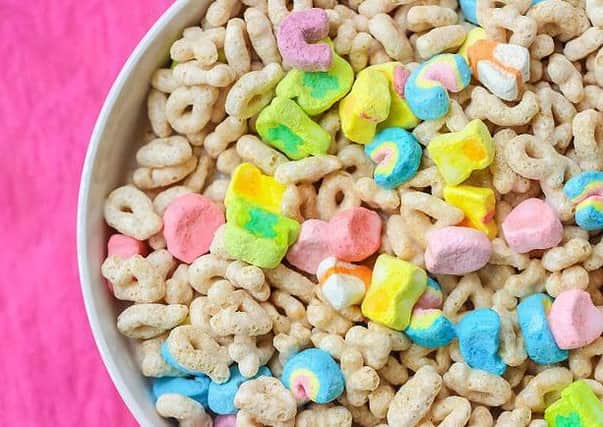Bakery Bulletin by Philippa Kelly: Limericks and Lucky Charms


Dressed in our Groovy Chick nighties,
We ate this cereal, watched the wedding of Muriel,
And by the way I’m a pisces.
The limerick above (yes it is - you can’t prove it isn’t and you can’t do any better) is a homage to the kind-of-Irish-yet-in-no-way-Irish cereal, Lucky Charms. You try rhyming things with that and see how you get on - ethereal, plucky, and qualms are not a poet’s friends.
Lucky Charms have been around for far longer than scented gel pens, or those shoes with the secret compartment in the sole, and long before we all drew our own faces and had them printed on a tea towel (so random, and yet every school in the country did it). Lucky Charms were invented in 1962.
Advertisement
Hide AdAdvertisement
Hide AdGeneral Mills is the big, grown-up firm that owns some of the most successful food production companies in the world, including Betty Crocker and Old El Paso. Once upon a time in General Mills land, an industry bigwig challenged his team of underlings to create a new product based on one of General Mills’ existing products. The underlings (I think they’d rather be called Product Developers) weren’t given free reign though - they had to use either Cheerios or Wheaties (Shredded Wheat to us limeys).
John Holahan was the man with the plan, the gent with intent, the dude with the food, the deputy with the recipe, the fellow with the marshmallow. John made the best cereal known to mankind, and collected nothing more than his annual salary for doing so. Capitalism, eh.
To be fair, other than throwing some marshmallows into his Cheerios, John didn’t achieve a lot; it was the marketing company that turned John’s soggy dream into a rainbow-laden, assault-on-the-senses reality.
In 1963, the world was introduced to L C Leprechaun; Sir Charms to you; Lucky the Leprechaun to his friends. Along with his apparently not racist appearance, Lucky’s apparently also not racist catchphrase - “They’re always after me Lucky Charms” - helped General Mills’ new brand’s popularity soar.
Advertisement
Hide AdAdvertisement
Hide AdFree toys, a cartoon, and a theme-tune also boosted sales, and the fact that a box of Lucky Charms consists of 37 per cent sugar definitely won kids over.
The original “marbits” - yes, Lucky Charms’ very own portmanteau of marshmallow and bits - were pink hearts, yellow moons, orange stars, and green clovers. In 1975, the first new marbit was added: blue diamonds. In 1983, purple horseshoes were introduced, and in 1989, red balloons. Should have been in ‘99. Throughout the nineties, a new marbit was added almost annually, and limited edition marbits included everything from whales and Olympic sports, to world landmarks and LGBT rainbows. With sprinkles and sparkles and marshmallows that partially melted away in order to reveal smaller marshmallows in the shape of a key, it’s almost like they thought of everything, but a quick scan of the ingredients reminds me that I shouldn’t even know how good Lucky Charms taste. Gelatine ruins the day. Again.
The collagen from animal body parts,
Goes in sweets, cereals, and tarts,
And in Lucky Charms, but don’t be alarmed,
Because Coco Pops are vegan and they’re nice too, perhaps even on a par with Lucky Charms, given the turning milk chocolatey thing they do, so just buy them instead.
What? I never said that one was a limerick.